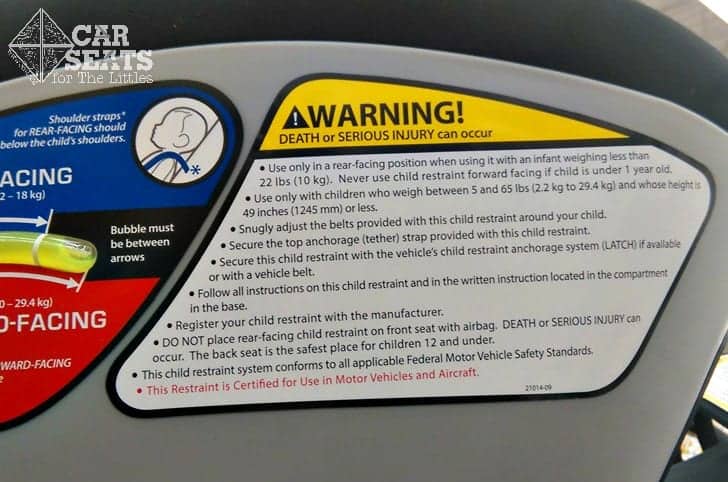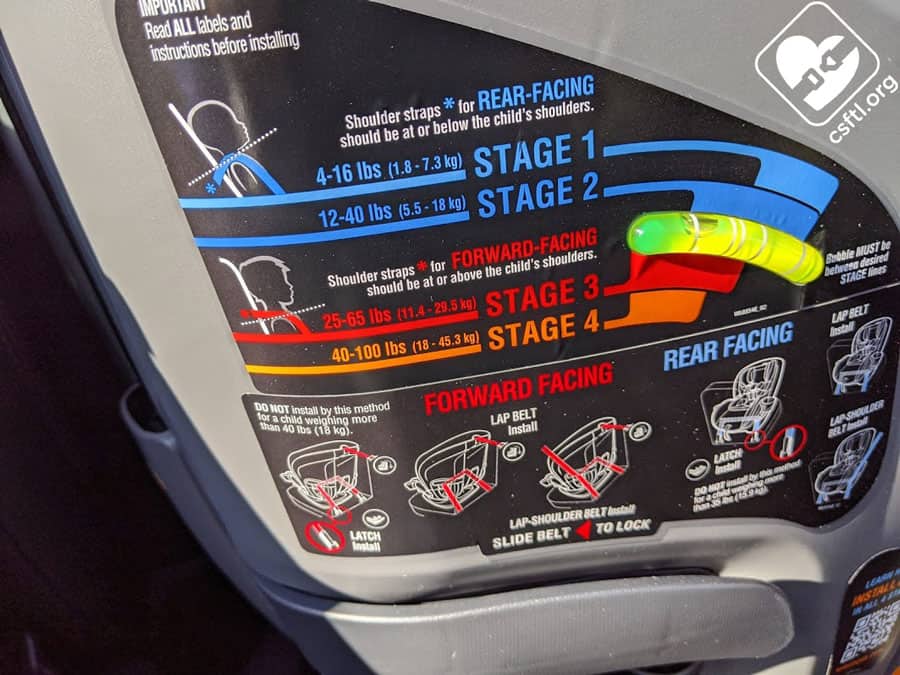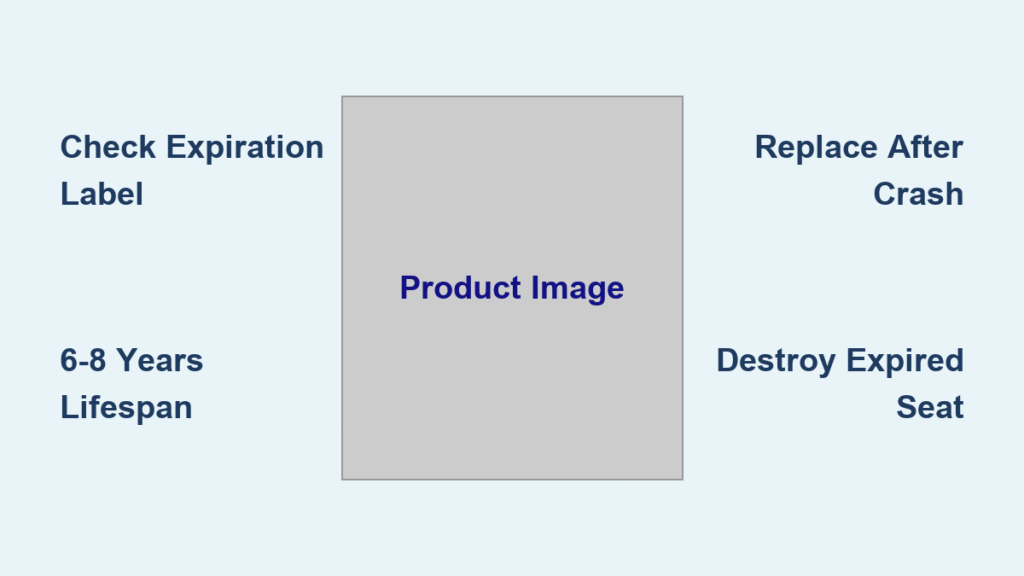You’re buckling your toddler into the same Chicco KeyFit that carried their older sibling home from the hospital six years ago. The seat still looks pristine—the harness clicks smoothly, the fabric shows minimal wear—but somewhere beneath the shell, an expiration date is quietly counting down. Every parent eventually faces this critical question: how long is a chicco car seat good for before it becomes dangerously unsafe? The answer isn’t about visible damage—it’s about invisible material fatigue that compromises protection during a crash. Understanding your specific seat’s expiration timeline could mean the difference between safety and catastrophe when physics turns violent.
Let’s cut through the confusion with model-specific expiration rules, hidden degradation factors you can’t see, and actionable steps to verify your seat’s status today. No more guessing games—just manufacturer-certified timelines to keep your child protected.
Your Chicco Seat’s Exact Expiration Timeline by Model

KeyFit Infant Seats: 6 Years From Manufacture Date Only
Your KeyFit, KeyFit 30, or Fit2 infant carrier expires exactly six years from the manufacture date—no extensions. Canadian regulations reinforce this with Transport Canada’s explicit requirement: six years from manufacture date (or purchase date with proof). This strict six-year limit reflects the intense daily use infant seats endure during their first year, combined with extreme temperature swings inside vehicles. Unlike some brands, Chicco doesn’t offer longer expiration for Canadian models—your label’s date is absolute.
NextFit Convertible Seats: 8-Year Protection Window
NextFit, Fit360, and OneFit models provide an eight-year lifespan from the manufacture date. This extended timeline matches their longer usage period, potentially carrying your child from birth through elementary school. Recent production runs consistently show eight-year labels, but always verify your specific seat—Chicco occasionally updates lifespans with new production batches. Never assume based on model name alone; the label on your seat is the final authority.
Booster Seat Variability: 6-8 Years Depending on Production
GoFit and KidFit boosters fall into a 6-8 year range based on production date. Newer models typically reach eight years, while older versions cap at six years. This variation stems from design updates and material improvements over time. Your specific seat’s label—not general guidelines—determines its actual expiration. Ignoring this variability risks using a seat that can no longer absorb crash forces effectively.
Locate Your Seat’s Expiration Date in 60 Seconds

Critical Label Locations Under the Seat Shell
Flip your Chicco seat upside down immediately. The primary expiration label hides as a white adhesive sticker on the underside of the seat shell or car seat base. If you don’t find it there, check these backup spots:
– Side panel near the belt path—look for a small rectangular sticker
– Back of the seat shell—sometimes engraved directly into plastic
– Product registration card tucked in your original box (less reliable than physical label)
Never rely on purchase receipts or memory—only the manufacturer’s label provides legally valid expiration information. Pro tip: Take a photo of the label with your phone for quick future reference.
Decoding Your Expiration Label Formats
Chicco uses three distinct label formats—know which one applies to your seat:
Format 1: “Do Not Use After: 03/2029” (most common)
Format 2: “Expires: 03/2029”
Format 3: “Mfg: 03/15/2023 – Lifespan: 6 years”
If your label shows “Lifespan: X years,” add that number to the manufacture date. KeyFit seats always use six years; convertibles typically use eight. Bold warning: Seats without visible expiration dates must be immediately retired—this indicates either damage or an unknown manufacturing origin.
Why Your Seat Fails Before Showing Damage
Invisible Plastic Embrittlement From Heat Cycles
Your car’s interior becomes an oven every summer, regularly exceeding 120°F. Chicco’s polypropylene shells undergo repeated thermal stress, causing microscopic cracks you can’t see. By year six (infant seats) or eight (convertibles), the plastic loses critical impact resistance—even when it looks perfect. This embrittlement means the shell may shatter rather than absorb crash forces, transferring dangerous energy to your child.
Harness Webbing That Loses Critical Tension
That polyester harness stretches microscopically every time you tighten it. Over 2,000+ buckles, the fibers permanently weaken. A harness that stretched 5% in year one might stretch 15% by year six, creating life-threatening slack during a collision. Never attempt to “refresh” old harnesses—replacement parts don’t reset the expiration clock.
Foam Energy Absorption Failure
The EPS/EPP foam lining compresses permanently from daily use and temperature swings. This foam is engineered to crush during crashes, absorbing energy that would otherwise hit your child’s head and chest. Compressed foam can’t perform this function—meaning your child experiences significantly higher impact forces in a crash.
Emergency Replacement Triggers You Can’t Ignore

Mandatory Post-Crash Retirement Rule
Chicco requires immediate replacement after any crash, even minor fender-benders. Their policy is stricter than NHTSA’s minor-crash exemption because hidden micro-damage compromises future protection. Document all incidents with photos and police reports for insurance claims—most policies cover replacement costs.
Chemical Damage From Improper Cleaning
Using bleach, solvents, or pressure-washing accelerates plastic degradation. Chicco-approved cleaning requires only mild soap and water—anything stronger voids safety certifications. If you’ve used harsh cleaners, replace the seat immediately regardless of age.
Extreme Storage Conditions That Age Seats Prematurely
Storing seats in unheated garages (below-freezing temps) or attics (140°F+ heat) creates thermal stress cracks. If your seat endured these conditions, replace it six months before the labeled expiration date—better safe than sorry.
Smart Replacement Strategies to Save Money
When You Must Replace Immediately
Retire your seat without exception if:
– Expiration date is reached—regardless of visual condition
– Any crash involvement occurred (document for insurance)
– Critical parts are missing and Chicco no longer stocks replacements
– Recall remedy kits can’t fully resolve safety issues
Budget-Friendly Timing Tactics
Start shopping 6-8 months before expiration to:
– Catch end-of-year clearance sales (typically November-January)
– Avoid emergency purchases at full price
– Research newer safety features like improved side-impact protection
– Coordinate with growth milestones (e.g., transitioning to booster seats)
Safe Disposal Protocol to Prevent Tragedies
Three-Step Destruction to Stop Reuse
Expired seats often get resold unknowingly, putting other children at risk. Prevent this with:
1. Remove and destroy components—cut harness straps into 6-inch pieces, remove cover
2. Mark shell clearly—write “EXPIRED – DO NOT USE” in permanent marker on all sides
3. Bag securely—place in black trash bag to obscure from “dumpster rescuers”
Recycling and Trade-In Opportunities
Target and Walmart host biannual trade-in events offering 20% off new seats. Many municipalities accept #5 plastic shells at recycling centers. Contact Chicco Customer Service (1-877-4-CHICCO) for local recycling contacts—they maintain partnerships with specialized programs.
Final Action Plan: Verify Your Seat Today
Take five minutes now to ensure your child’s safety:
1. Flip your seat—find the white label on the underside or base
2. Calculate expiration—add 6 years (infant) or 8 years (convertible/booster) to manufacture date
3. Set phone alerts—6 months and 30 days before expiration
4. Register online—at chiccoshop.com/register for recall notifications
5. Document history—keep purchase receipt and crash records
That six-year-old KeyFit might have months left—or it might be dangerously expired. Your child’s safety depends on knowing the difference. Chicco’s certified technicians verify expiration dates at 1-877-4-CHICCO—call today instead of gambling with physics. Remember: In car seat safety, “it still works” isn’t good enough when seconds determine survival.





